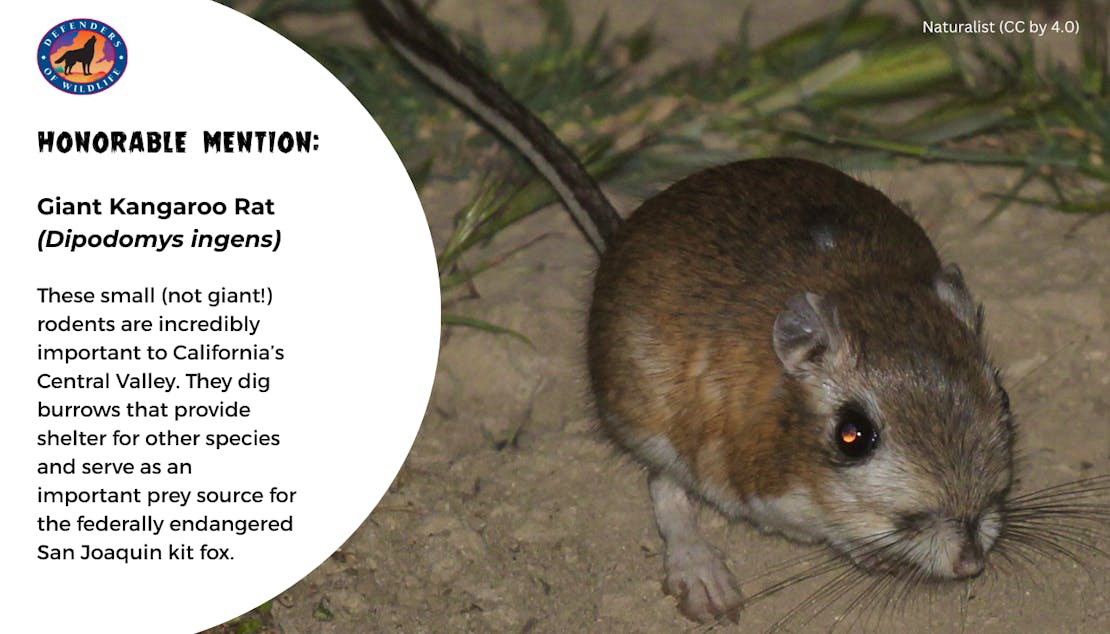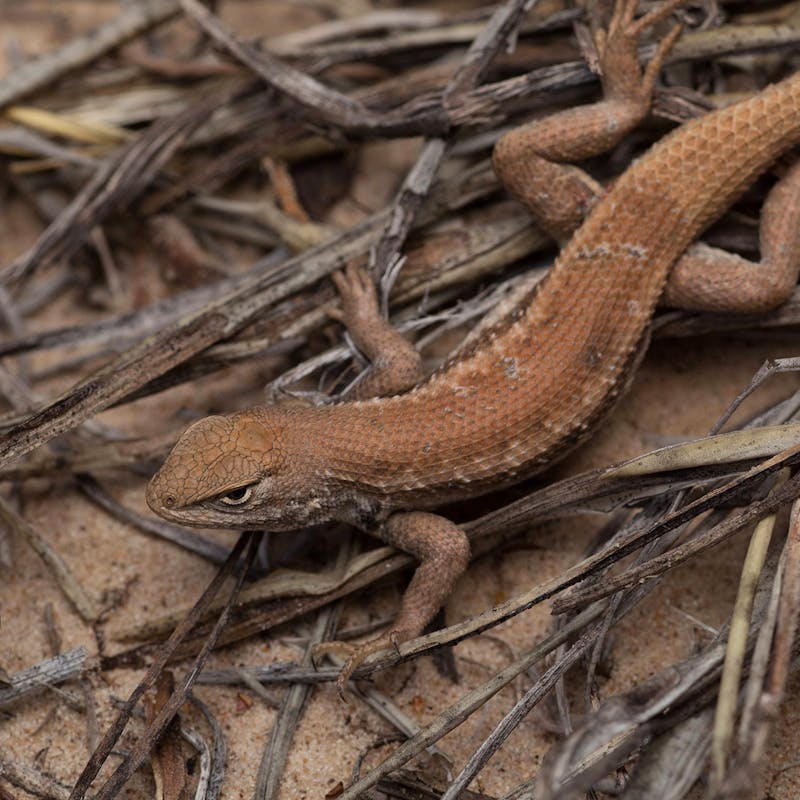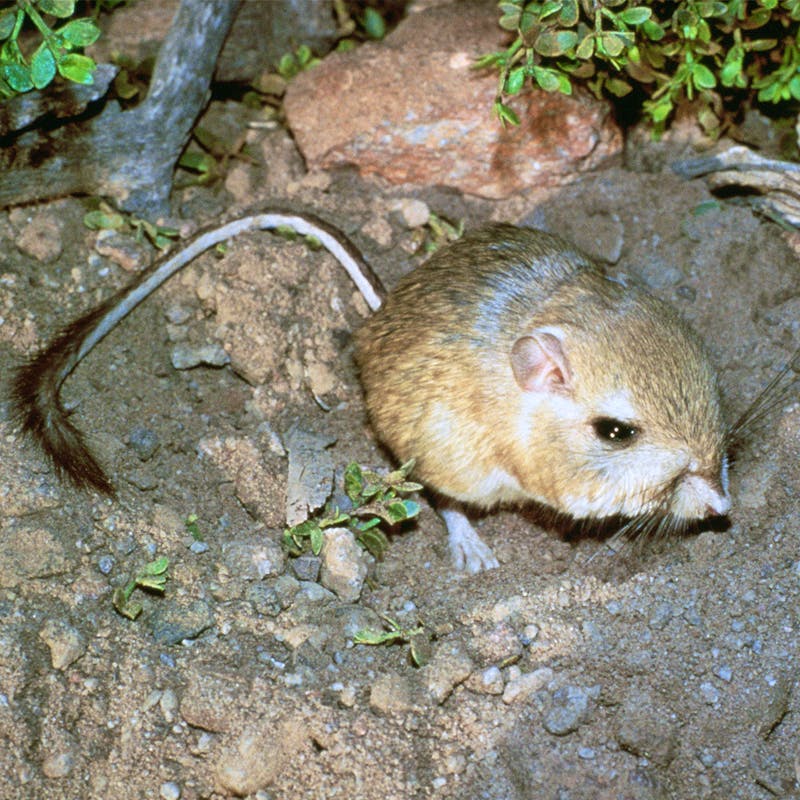Several members of Defenders of Wildlife’s Field Conservation teams contributed to this blog.
When you spend a lot of time trekking up mountains, snorkeling in streams and working with wildlife, you may cross paths with some frightfully scary animals. But on a closer look, things may not be as creepy as they seem. In fact, these fear-inducing animals are pretty cool and essential to their environment.
Read on for 13 “creepy” animals Defenders of Wildlife’s field staff have come across as they work to protect and restore wildlife around the country.
13. Wolverines (Gulo gulo)
Their name may conjure visions of a wolf- or bear-like creature who stalks you in the dark. But in reality, wolverines are members of the weasel family. They are very elusive, living in high alpine forests in northern regions around the globe and are dependent on deep snow. This habitat, however, is getting scarcer. With only about 300 remaining, wolverines were finally listed as threatened under the Endangered Species Act in 2023.
12. Giant Garter Snakes (Thamnophis gigas)
Striped in orange, yellow or cream. Drowning their food and growing up to five feet long. Giant garter snakes can be terrifying to observe! But these slithering wonders are actually really shy and typically avoid humans. Giant garter snakes eat aquatic prey like small fish and frogs, and swim in the tepid waters of California’s inland wetlands. In fact, they are so important to California’s threatened freshwater ecosystems that they may soon be listed as the state snake!
11. Virginia Opossums (Didelphis virginiana)
It may be disturbing when an opossum plays dead or bares its teeth. These mechanisms, however, allow opossums to avoid interaction. They don't choose to "play dead” but are entering a state called tonic immobility, which is their body's response to extreme stress. Opossums want you, or other animals, to lose interest in them and move along. Showing their 50 teeth -- the most of all land mammals -- is also a defense measure, which means "go away."
10. Cicadas
Perhaps it’s the way their bulky bodies crash into everything, including your face, that makes cicadas scary. Or the ghostly exoskeletons they shed and leave clinging to branches. Or how some species, known as periodical cicadas, emerge from the ground in 13- or 17-year cycles. Despite their appearance, substandard flying skills and zombie-like awakenings, cicadas are on the dinner menu for many animals, making them a critical part of the food chain.
9. Bats
Books and movies illustrate bats as blood-sucking, hair-tangling, terrifying creatures. But they aren’t so spooky upon closer look. Townsend’s big-eared bats’ (Corynorhinus townsendii) ears are almost half the length of their body. Big brown bats (Eptesicus fuscus) can make “purring” sounds and have extremely soft fur. Most importantly, bats eat moths, beetles, mosquitoes and other insects. The natural pest control they provide keeps the environment balanced and is estimated to be worth over $50 billion.
8. Tarantula
Tarantulas are the largest spiders, with adults growing to 6 inches long. They look ferocious but are not deadly to humans and are usually calm except when disturbed. They are common in Mojave Desert, especially in the fall, and when mature can travel up to 20 miles a day in search of a mate! Tarantulas feed on and help control insects and are prey themselves for many other animals – including our #1 pick (read below).
7. Rats
Rats are often used to incite fear and loathing and are common in Halloween decor. But these animals are actually very smart and highly social! African giant rats are trained for search and rescue, to uncover mines and to fight wildlife trafficking. Unlike most wildlife that should remain in the wild, there are domestic rats that just need high quality care, social companions, and time and attention to be trainable, cuddly pets.
6. Hellbender (Cryptobranchus alleganiensis)
The name "hellbender” may illicit a fearful or disgusting reaction. This slimy giant, however, is harmless. Hellbenders are ancient animals that thrive in clean streams. Their unique adaptations, like how they breathe through their skin, and role as a water quality indicator species certainly make them “cool” throughout the regions they call home.
5. Giant desert centipede (Scolopendra heros)
It has a long, armored body, dozens of creepy twitching legs and large, intimidating venomous fangs. The giant desert centipede is an important predator that has an extremely painful bite and specializes in taking down prey larger than itself. These centipedes persistently hunt cockroaches, termites, and even snakes and small rodents, which helps keep balance in fragile desert environments.
4. Pacific Salmon
“Zombie salmon" is a nickname for Pacific salmon that are in a visible state of decay and organ failure but are still somehow alive and actively swimming from the ocean upstream to spawn. Once these “swimming corpses” have mated and laid their eggs, they die. Their carcasses provide essential nutrients to the river ecosystem.
3. Pacific Lamprey (Entosphenus tridentatus)
They look straight out of a horror film. In the Great Lakes Region, sea lamprey (Petromyzon marinus) are invasive and damaging to the environment. Native Pacific lamprey in the Pacific Northwest and Alaska, however, are important indicators of the ecosystem’s health. They are anadromous – migrating from rivers to sea to spawn – and provide nutrient cycling in river systems. They also offer a predation buffer for salmon, offering a more calorically rich meal for other animals.
2. Texas Horned Lizard (Phrynosoma cornutum)
The iconic Texas horned lizard defends itself with one of the goriest tricks in nature: it can squirt blood from its eyes! The lizards do this by rupturing tiny vessels in their eyelids, projecting it up to five feet. This startles predators and contains chemicals that repel coyotes, foxes and dogs. Unfortunately, these lizards have declined across much of Texas due to habitat loss, pesticides that reduce their harvester ant prey and invasive fire ants.
1. Tarantula Hawk Wasp (Pepsis thisbe)
Imagine a blue-black, iridescent wasp with bright orange wings dragging a tarantula across your hiking trail. Tarantula hawk wasps are native parasitic insects. Females will paralyze a tarantula, haul it back to her nest and lay eggs in the tarantula’s zombified body. Despite having one of the most painful stings, these wasps pose no risk to humans. But they do play an important role, from controlling tarantula populations to pollinating important plants like milkweed.





















